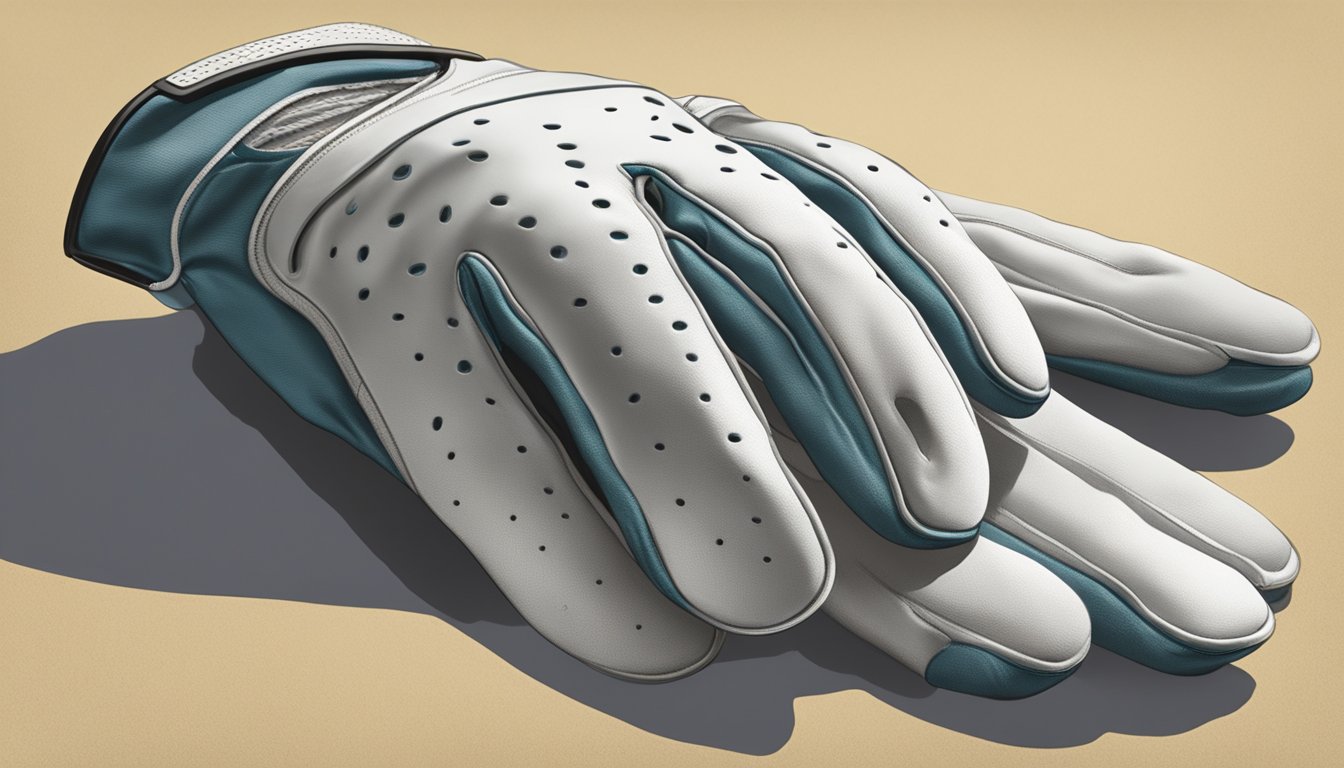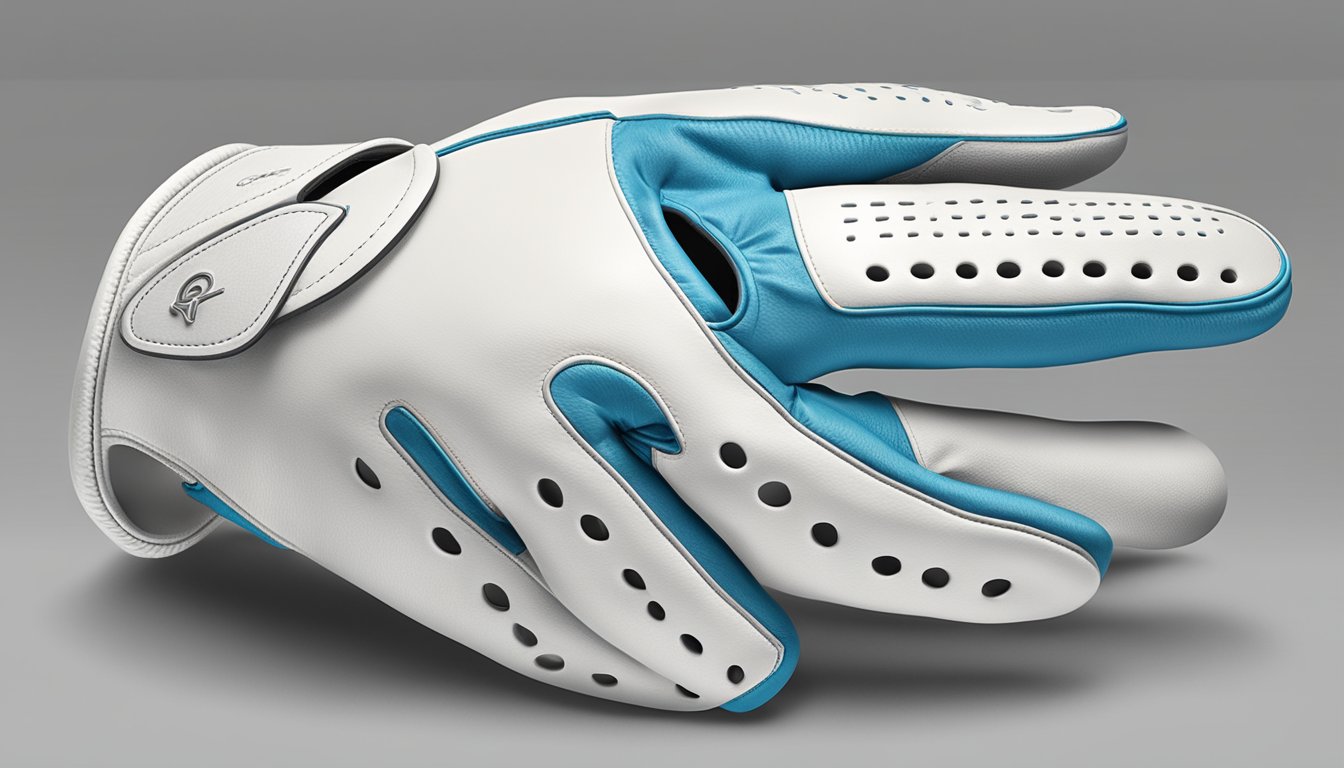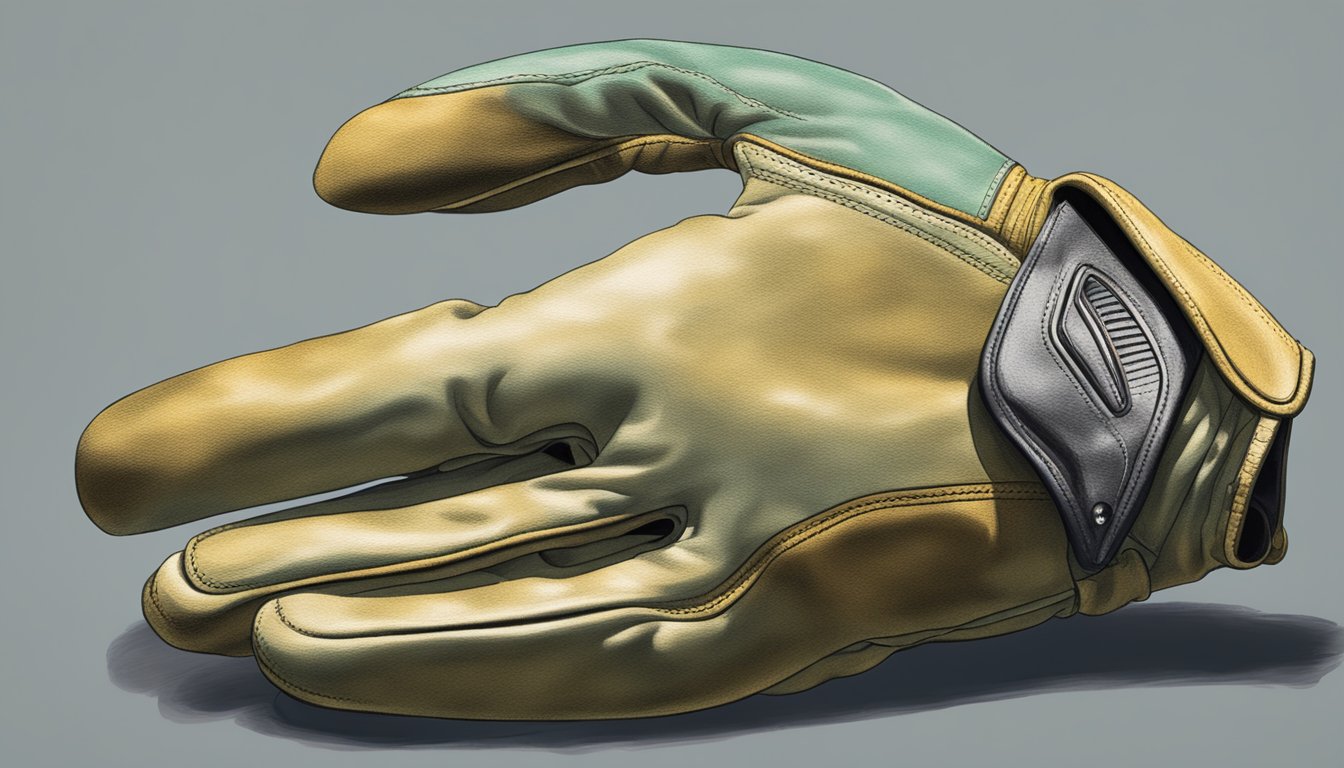If you’re an avid golfer, you know how important it is to have the right equipment. One key piece of equipment is the golf glove. It not only provides a better grip on your club, but also helps prevent blisters and calluses. But how long do golf gloves last?
The lifespan of a golf glove depends on various factors, such as the quality of the material, frequency of use, and weather conditions. On average, a golf glove can last anywhere between 8 and 10 rounds. However, if you’re playing in humid or rainy conditions, you may need to replace your glove more frequently.
To ensure that your golf glove lasts as long as possible, it’s important to take proper care of it. This includes storing it in a cool, dry place and washing it regularly. Knowing when to replace your golf glove is also crucial to maintaining the longevity of your equipment. In the next section, we’ll discuss the factors that influence the lifespan of golf gloves and how to properly care for them.
Key Takeaways
- The lifespan of a golf glove depends on various factors such as quality, frequency of use, and weather conditions.
- Proper care of your golf glove is essential to maintain its longevity.
- Knowing when to replace your golf glove is important to ensure you have the right equipment on the course.
Understanding Golf Glove Materials
Golf gloves are made from different materials, and understanding the differences between them can help you make an informed decision when buying a new glove. Here are some of the key factors to consider when choosing between leather and synthetic gloves.
Leather vs Synthetic Gloves
Leather golf gloves are made from natural materials, typically cabretta leather, which is soft and durable. Leather gloves are more expensive than synthetic gloves, but they offer better grip and feel, which can help improve your swing. They also tend to last longer than synthetic gloves, although the lifespan of a glove depends on how often you use it and how well you take care of it.
Synthetic golf gloves, on the other hand, are made from a variety of synthetic materials, such as microfiber, polyester, or spandex. They are less expensive than leather gloves and come in a wider range of colors and styles. Synthetic gloves are also easier to care for than leather gloves, as they can be washed and dried without losing their shape or durability.
Quality of Materials
When choosing a golf glove, the quality of the materials used is an important factor to consider. A high-quality leather glove can last anywhere from 15 to 20 rounds of golf, while a synthetic glove may only last for 5 to 8 rounds.
The type of glove you choose will also affect its durability. For example, a glove with a reinforced palm will last longer than a glove without one. Similarly, a glove with a double-stitched seam will be more durable than a glove with a single-stitched seam.
In conclusion, when choosing a golf glove, it’s important to consider the materials used and the quality of those materials. Leather gloves offer better grip and feel, while synthetic gloves are less expensive and easier to care for. Ultimately, the choice between leather and synthetic gloves comes down to personal preference and budget.
Factors Influencing the Lifespan of Golf Gloves
https://www.youtube.com/watch?v=qSIsNESOsZ0&embed=true
Golf gloves are an essential part of a golfer’s equipment. They provide a better grip on the club and protect the hands from wear and tear. However, golf gloves are not indestructible, and their lifespan depends on several factors.
Frequency of Use
The more you use your golf gloves, the faster they will wear out. If you are an avid golfer and play several times a week, your gloves may not last as long as someone who only plays occasionally. It is recommended that you have at least two pairs of gloves to rotate, which will help extend their lifespan.
Weather Conditions
Weather conditions can also affect the lifespan of your golf gloves. Heavy rain and high humidity can cause the gloves to become saturated with moisture, which can lead to tears and wear and tear. It is essential to dry your gloves thoroughly after each use to prevent them from deteriorating.
Quality of the Gloves
The quality of the gloves is another essential factor that influences their lifespan. High-quality gloves made from durable materials will last longer than cheaper gloves made from low-quality materials. It is important to invest in gloves that are designed to withstand wear and tear.
Sweat and Moisture
Sweat and moisture from your hands can also affect the lifespan of your golf gloves. Over time, the sweat and moisture can cause the gloves to become stiff and lose their elasticity. It is essential to wash your gloves regularly to remove any sweat and moisture that may have accumulated.
Improper Grip
An improper grip on the club can cause excessive wear and tear on your gloves. If you grip the club too tightly or use an improper grip, it can cause the gloves to wear out faster. It is important to practice proper grip techniques to help extend the lifespan of your gloves.
In summary, several factors influence the lifespan of golf gloves. The frequency of use, weather conditions, quality of the gloves, sweat and moisture, and improper grip all play a role in determining how long your gloves will last. By taking care of your gloves and investing in high-quality gloves, you can help extend their lifespan and get the most out of your golfing experience.
Importance of Proper Golf Glove Care
https://www.youtube.com/watch?v=NkELZVCjVzQ&embed=true
As a golfer, you know the importance of having the right gear to play your best game. One essential piece of equipment that often gets overlooked is the golf glove. A good golf glove can help you maintain a firm grip on your club, prevent blisters, and improve your swing. However, to get the most out of your golf glove, you need to take proper care of it.
Proper care of your golf glove involves more than just keeping it clean. Here are some tips to help you extend the life of your golf glove:
-
Dry your glove after use: Dampness is the enemy of leather, and if you don’t dry your glove after use, it can become stiff and uncomfortable to wear. To dry your glove, gently squeeze out any excess moisture and lay it flat on a clean, dry surface. Avoid hanging it up to dry, as this can cause the leather to stretch and lose its shape.
-
Store your glove properly: When you’re not using your golf glove, keep it in a cool, dry place. Avoid storing it in direct sunlight or in a humid environment, as this can cause the leather to crack or become discolored.
-
Don’t wear wet gloves: If your golf glove gets wet during play, take it off and let it dry completely before using it again. Wearing wet gloves can cause them to stretch and lose their shape, and it can also lead to bacterial growth and unpleasant odors.
-
Rotate your gloves: If you play golf frequently, it’s a good idea to have more than one golf glove and to rotate them regularly. This will give each glove time to dry and recover its shape between uses.
-
Oil your old gloves: Over time, the leather on your golf gloves can become dry and brittle. To help prevent this, you can apply a small amount of leather oil to your gloves every few months. This will help keep the leather supple and prevent cracking.
By following these simple tips, you can help ensure that your golf glove lasts as long as possible and continues to perform at its best. Proper care and maintenance of your golf glove are essential for any golfer who wants to play their best game.
Signs That You Need to Replace Your Golf Glove

« Callaway Apex DCB Irons Review: The Best Golf Irons for High Handicap Players
Getting Swing on Plane: Tips for a More Consistent Golf Swing »
Golf gloves are an essential accessory for golfers, and they can last for a while if you take good care of them. However, there comes a time when you need to replace your golf glove. Here are some signs that indicate it’s time to replace your golf glove:
1. Holes or Tears
One of the most obvious signs that you need to replace your golf glove is when you notice holes or tears in the palm area or fingertips. These holes can affect your grip on the club and reduce the longevity of the glove.
2. Uncomfortable or Blisters
If your golf glove is uncomfortable or causes blisters, it’s time to replace it. An uncomfortable glove can distract you from your game, and blisters can be painful and affect your grip on the club.
3. Slippery or Loss of Grip
If your golf glove is slippery or has lost its grip, it’s time to replace it. A good golf glove should provide friction and enhance your grip on the club. However, over time, the texture of the glove can wear off, and the friction can decrease.
4. Rotating Gloves
Another sign that you need to replace your golf glove is when you start rotating gloves during a game. If you find yourself switching between gloves because one is uncomfortable or has lost its grip, it’s time to replace them.

In conclusion, replacing your golf glove is important to maintain a good grip on the club and improve your game. Keep an eye out for these signs, and replace your golf glove when necessary.
Choosing the Right Golf Glove for Comfort and Durability
https://www.youtube.com/watch?v=XoZQS8aJCe4&embed=true
When it comes to choosing the right golf glove, there are a few factors to consider to ensure that you get the best fit, comfort, and durability. Here are some tips to help you make the right choice for your golf gear:
Material Matters
Golf gloves come in two main materials: leather and synthetic. Leather gloves are known for their durability and high-quality feel, while synthetic gloves offer more breathability and flexibility. Both materials have their pros and cons, so it’s important to choose the one that suits your needs best.
Fit is Key
A comfortable fit is essential for a secure grip and maximum control during your golf swing. Make sure to measure your hand and choose the right size for your glove. A glove that is too tight can restrict your movement and affect your golf grip, while a glove that is too loose can slip and cause discomfort during your practice sessions.

Quality Counts
Investing in high-quality gloves may cost more upfront, but it can save you money in the long run. PGA Tour players often prefer brands like FootJoy and Titleist for their reliable and durable gloves. However, there are also less expensive options available that can still provide you with a comfortable fit and secure grip.
Take Care of Your Gloves
To make your gloves last longer, it’s important to take proper care of them. Avoid leaving them in direct sunlight or extreme heat, which can cause them to shrink or lose their shape. Also, make sure to wash them regularly and store them in a dry place to prevent moisture buildup.
In summary, choosing the right golf glove for comfort and durability requires considering factors such as material, fit, and quality. By taking care of your gloves and finding the right fit, you can ensure a comfortable and secure grip during your golf rounds and practice sessions.
Frequently Asked Questions
https://www.youtube.com/watch?v=kyRwoJ_dC7o&embed=true
How often should you replace your golf glove?
You should replace your golf glove once it starts to wear out, loses its grip, or becomes uncomfortable. The lifespan of a golf glove depends on several factors such as the frequency of use, the type of material, and how well you take care of it. On average, a golf glove can last for 10 to 20 rounds of golf or between 6 months to a year. Here is a useful resource that explains in detail how long golf gloves should last.
What are some tips for extending the life of golf gloves?
To extend the life of your golf gloves, you should avoid wearing them when you are not playing golf. You should also store them in a cool and dry place, away from direct sunlight. Additionally, you should clean your golf gloves regularly using a mild soap and water, and then air dry them. Here is a great resource that provides some useful tips on how to extend the lifespan of your golf gloves.
How do golf gloves typically wear out?
Golf gloves typically wear out due to the constant rubbing and friction between the glove and the grip of the golf club. This can cause the leather or synthetic material to become thin, lose its grip, or tear. Additionally, sweat, dirt, and oils from your hands can also cause the gloves to wear out faster.
Are there any tricks to prevent golf gloves from becoming crusty?
Yes, there are several tricks to prevent golf gloves from becoming crusty. One tip is to keep your gloves clean and dry by washing them regularly and storing them in a cool and dry place. You can also use a small amount of leather conditioner or baby powder to keep the gloves soft and supple. Here is a useful resource that explains how to prevent golf gloves from becoming crusty.
Do different brands of golf gloves last longer?
Yes, different brands of golf gloves have different lifespans. Some brands are known for their durability, while others may wear out faster. It is important to do your research and read reviews to find out which brands are the most durable. Here is a great resource that provides some recommendations on the most durable golf gloves on the market.
What are some of the most durable golf gloves on the market?
Some of the most durable golf gloves on the market include FootJoy, Titleist, Callaway, and Nike. These brands are known for their high-quality materials, excellent grip, and long-lasting durability. However, keep in mind that the durability of a golf glove also depends on how well you take care of it.











